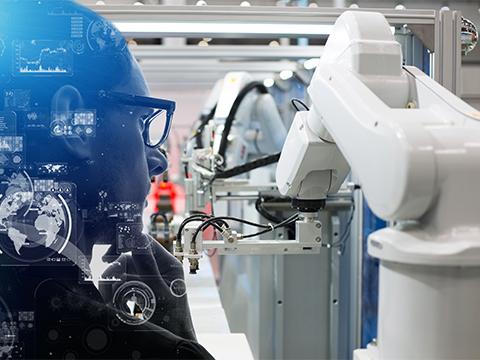
Posted to News on 1st Mar 2023, 16:30
How to deliver convergence with TSN

Jeremy Shinton, product manager for Edge computing technologies at Mitsubishi Electric, explains how companies can harness TSN to create an ideal, convergent network of industrial automation devices.
Time-Sensitive Networking (TSN) is an enabling technology for Smart Factories. The technology is ideally suited to help merge the realms of information technology (IT) and operational technology (OT), facilitating the development of holistic data-led manufacturing strategies. To fully realise the benefits a TSN-driven setup, companies need to consider compatibility, the protocols used on top of TSN and network architecture.
An extension of standard Ethernet technology, TSN is a unique solution that delivers high-speed, deterministic communications while supporting the convergence of multiple types of data traffic within one network. As a result, businesses can simplify network architectures and enhance the flexibility of their communications systems while effectively sharing information across an entire enterprise to optimise production activities.
To fully realise the merging potential of TSN, it is important to develop a suitable implementation plan. Among the first aspects to consider are the design of a new network architecture and its configuration. These should reflect the ability of TSN to merge both IT and OT. In effect, while existing infrastructures may partially benefit from the technology, the greatest advantages can be experienced by combining different data traffics onto a TSN-compatible network, creating a flattened infrastructure.
In addition to the design of the network, it is important to select the right automation components. In particular, businesses should define the capabilities and level of performance necessary to address the requirements of their facilities. To support extremely accurate, high-speed applications, it is best to predominantly select master, local and remote devices that incorporate TSN directly into the components. Conversely, when maintaining low investment costs is a priority, software-based solutions are ideal.
Ensuring compatibility
Another aspect to consider is ensuring interconnectivity. While TSN offers backwards compatibility, the more TSN-compatible devices that are installed, the more a network’s capabilities can be enhanced. To put it simply, the application of a network communication technology that supports TSN is only useful if suitable products are used.
Furthermore, it is crucial to ensure that any new TSN-compatible devices can effectively communicate with other nodes on a network. As the IEC/IEEE 60802 - TSN Profile for Industrial Automation is still being developed, the easiest way to ensure effective interconnectivity is to utilise devices that rely on the same protocols. In effect, this measure ensures that all automation products would rely on the same IEEE 802.1 sub-standards, such as IEEE 802.1 Qbv.
Therefore, it is essential to select components that use an established and widely adopted network technology. For example, CC-Link IE TSN is an open solution developed by the CC-Link Partner Association (CLPA), which comprises more than 3,600 global industrial automation specialists as members. By choosing CC-Link IE TSN compatible products, businesses can benefit from a universally accepted communication system and a broad range of interoperable automation devices.
Alternately, nodes that use different protocols have the potential to coexist on the same TSN-capable architecture. However, businesses must make sure that each different network technology has its own master module.
Defining performance
When looking at TSN-compatible automation devices, businesses should also look at their certification classes - namely A or B. While class B solutions generally provide higher performance, class A products are useful to replace existing, non-TSN compatible products. Therefore, it is important for businesses to define the capabilities required in order to determine what type of certification class can best address these needs.
The successful implementation of TSN and creation of futureproof Smart Factories requires companies to ask themselves key questions about their networks and nodes. Mitsubishi Electric’s specialists can help businesses to create application specific frameworks and provide technical support for any questions that may arise along the way. At the same time, the company’s TSN-compatible automation devices can accommodate a broad range of development and configuration options.
Mitsubishi Electric offers a wide range of over a hundred class A and B controllers as well as responders, such as the iQ-F PLC and the iQ-R motion master, I/O modules, HMIs, servos and variable speed drives. These are all compatible with CC-Link IE TSN, supporting wide acceptance as well as 1 Gbit/s speed. By selecting these automation components and building an advanced TSN-driven setup, companies can create the level of convergence required by future-oriented operations.
Want the latest machine building news straight to your inbox? Become a MachineBuilding member for free today >>

















